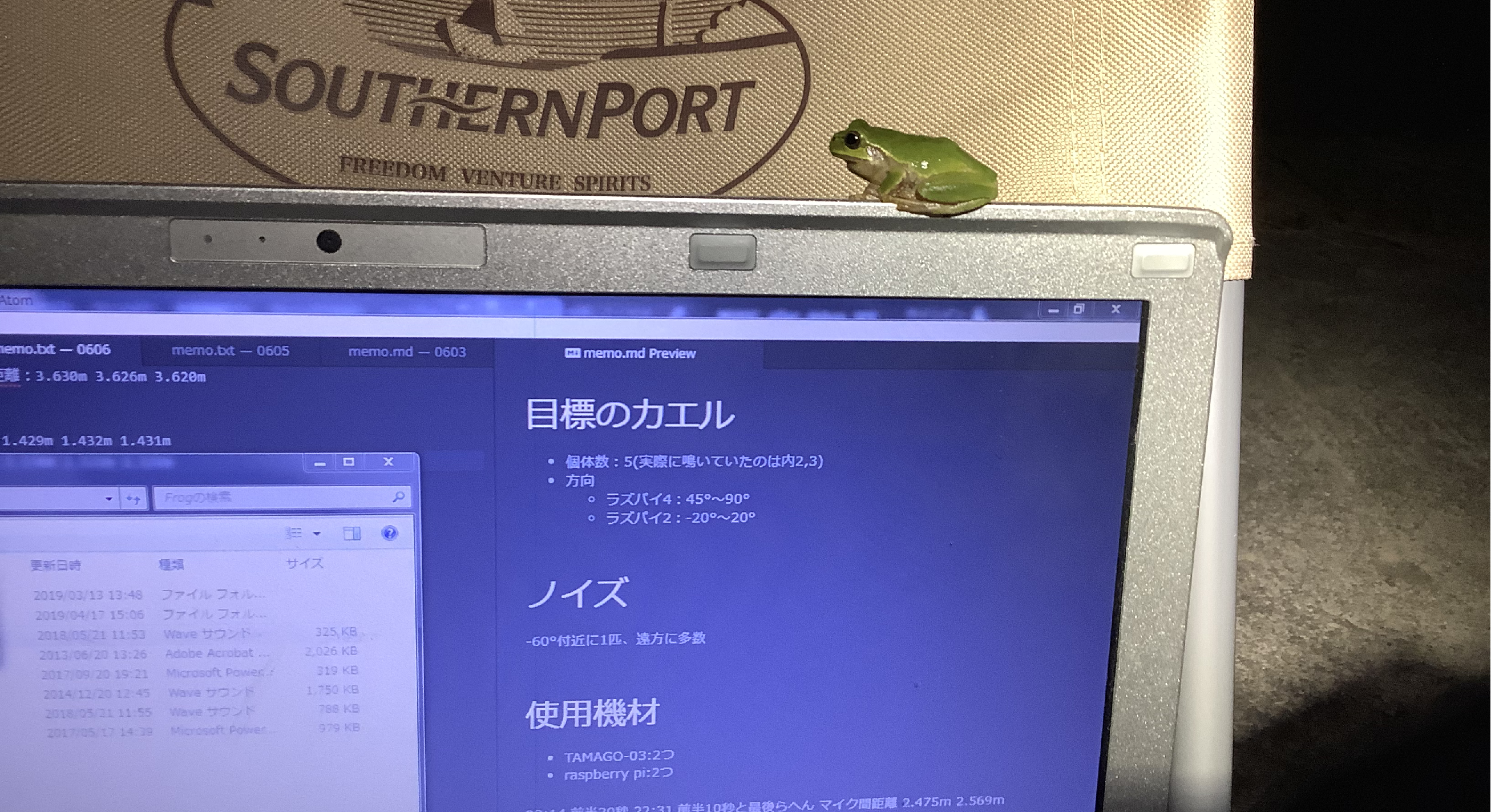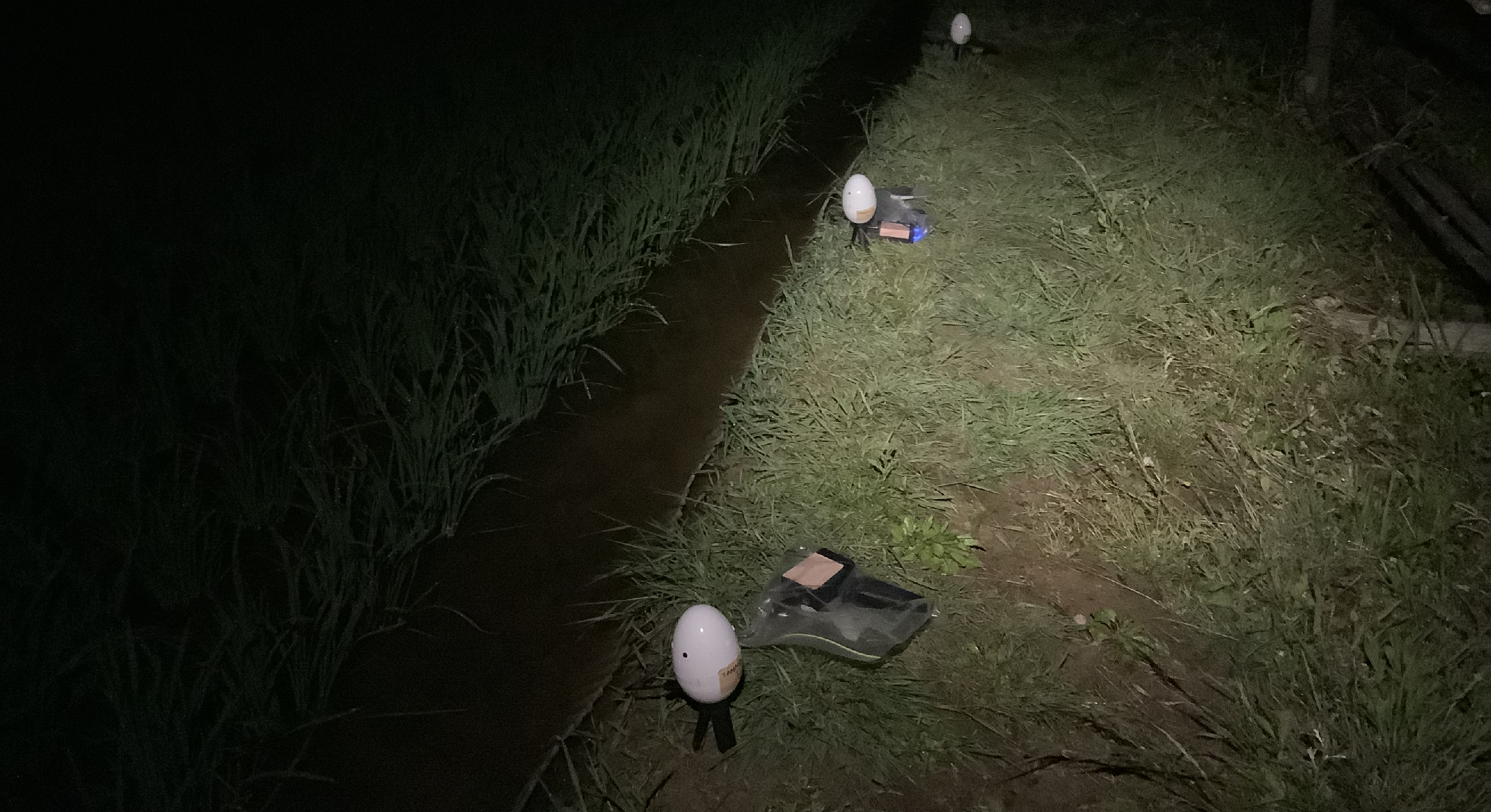Automated measuring of spatio-temporal data of animal activity
Observation is essential for creating the mathematical model of animal behavior. Such mathematical models inspired from biological mechanisms help to lead robust and adaptive systems in the ICT field. We focus on the call of animals and try to create the system for acoustic source localization. Many localization techniques have been proposed so far, but most of them are based on the assumption that targets had a transmitter or a receiver of the radio signal. In the case of finding creatures, therefore, those techniques cannot be simply applied. We implement an acoustic localization system using wireless sensor networks whose node has a microphone and conduct experiments in an actual environment.

Localization experiment using a TDOA-based method with IRIS Motes
We propose an identification method of sound source locations in outdoor areas by employing direction-ofarrival (DOA) measurements obtained from a microphone array. In determining the locations of sound sources, at least two microphones must record the same sound. Existing methods implicitly assume that sound sources are distributed in an area surrounded by the microphone arrays. It also implies that the “sound-observable” range of the microphones should exceed the maximum distance between microphones. In an outdoor field, however, microphone-array-deployable areas are limited as just in our field case. That is, those conditions are not always met, and accurate microphone positions cannot be obtained. By locating microphone arrays close to each other, the overlapping area observed by them is enlarged and also their positions can be accurately measured. However, since most existing localization methods do not consider sound sources outside the area surrounded by the microphone arrays, they cannot achieve both of real-time and accurate localization. We propose a method with less computational complexity while obtaining high level of accuracy. Simulation results show that the proposed method can reduce the computation time by 90% while obtaining the same estimation accuracy as the existing method. Moreover, our proposed method achieves a good estimation accuracy with an average error of less than 60 cm in outdoor experiments.

Japanese tree frog

Outdoor localization experiment using a DOA-based method with Raspberry-pi and TAMAGO-03 (8ch microphone array)
